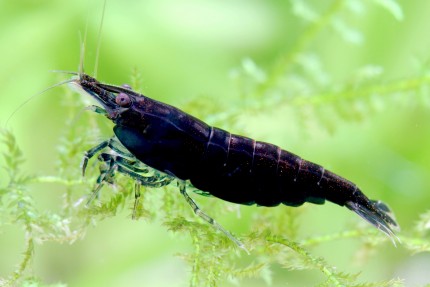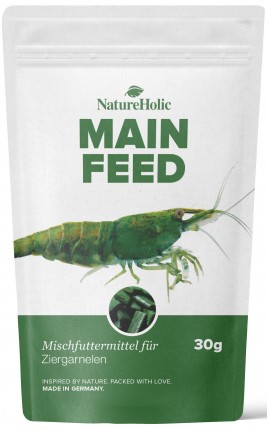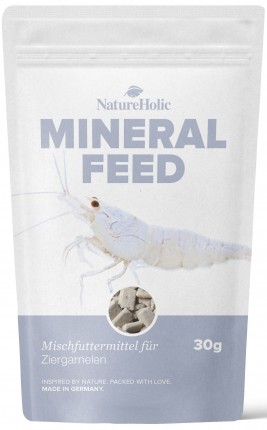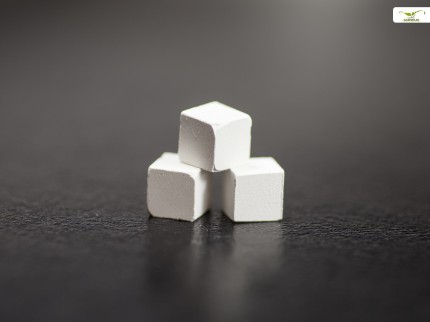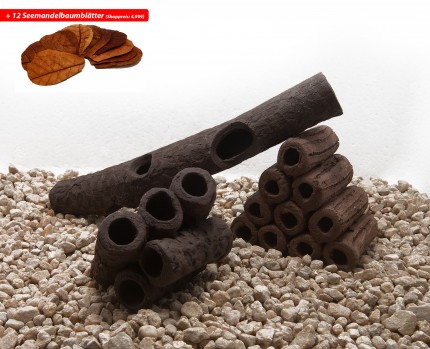Blue Bee Shrimp - Chocolate Bee Shrimp
It may be one of the smallest shrimp species in the hobby - males of the Blue Bee or Chocolate Bee Shrimp only grow to about 1.5 to 1.8 inches long, with adult females reaching a maximum of 2 inches in body length.

Not a "real" bee shrimp
Despite their name, the Blue Bees do not belong to the bee shrimp, but to the genus Paracaridina and thus to the relationship of the Princess Bee and the Camouflage Tiger. The Blue Bee is also native to small, cool, fast-flowing mountain streams in the southern Chinese province of Guangdong and thus, like all species from southern China, prefers soft, slightly acidic water
In the habitat one finds almost no higher plants, only possibly a few mosses at the water edges. At the bottom of the water there are collections of leaves, in which the shrimps prefer to sit. Usually mountain streams flow through forested areas and are heavily shaded.
Blue Bee Shrimp not yet identified
It is not yet known which species the Blue Bee exactly belongs to, or if this shrimp has even been scientifically described. For the time being it is listed as Paracaridina sp., which means that the genus is known (Paracaridina), but the species is not yet known.
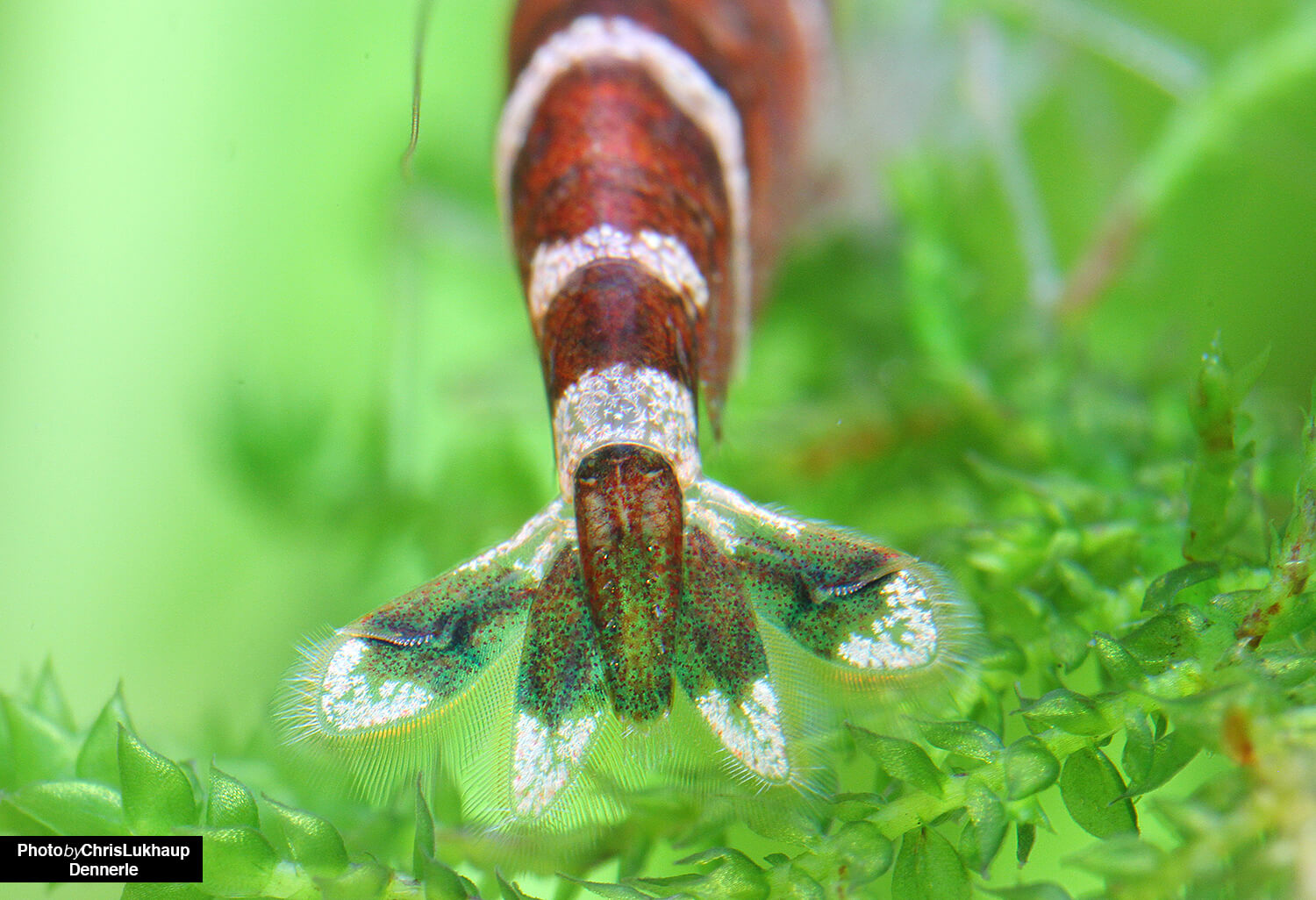
Coloration Blue Bee Shrimp
Blue Bee shrimp are much more variable in color than their name suggests. They can have a strong dark blue, but also almost black basic coloration, but you can often find dark chocolate brown, reddish brown or even bright red shrimp. They all have in common the four bright white stripes of varying lengths across the abdomen. Males are slightly less intensely colored than females, and they are noticeably slimmer.
Reproduction
Also unusual: the eggs, which pregnant females squeeze out after mating and attach to theire swimming legs under the abdomen, are initially a bright crimson. Toward the end of gestation, the eggs darken and take on a brownish-red hue. Females carry very few, rather small eggs compared to other dwarf shrimp species, often only ten to fifteen eggs. The gestation period is about three to five weeks at room temperature. The shrimp larvae that hatch from these eggs are also very small compared to other dwarf shrimp species, but by the time they hatch they are already almost fully developed little images of their parents. They only need a single molt to look completely like a miniature version of an adult shrimp. This molt usually occurs only hours after hatching. We recommend Natureholic Babyfeed for successful rearing. The NH rearing food provides the juveniles with all the necessary nutrients they need to get through this delicate phase in good health.
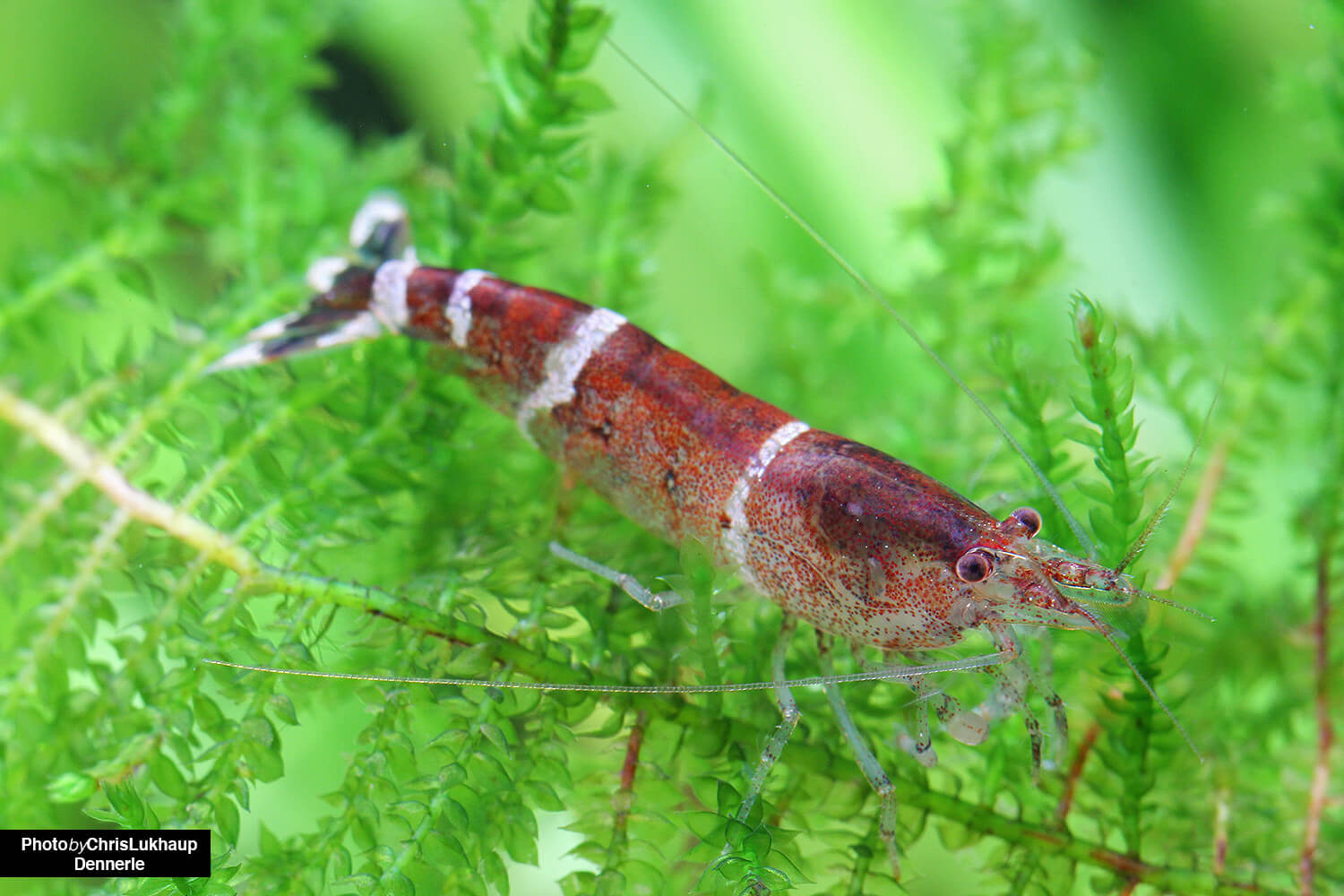
Keeping in the aquarium
Since the Blue Bee is an absolutely peaceful little shrimp, you can leave the juveniles in the aquarium with the half-grown and adult conspecifics, they will grow up there without any problems.
Shortly after the introduction into the aquarium, the little jack-of-all-trades are still very shy and live rather hidden. They love a thin layer of brown autumn leaves in the aquarium, under which they can hide and which, in addition to protection and cover, also provides them with food. The Blue Bee incredibly likes to graze the biofilms that form on this foliage. After some time, when the foliage is broken down by bacteria, the leaf material itself is also nibbled on. But also green food like stinging nettle, spinach or dandelion is taken over-broken or dried, in powder form or pelleted very gladly. The Blue Bee shrimp covers its protein requirements with the bacteria in the biofilms, but it also likes to take protein food specially designed for shrimp, such as that from Natureholic. Of course, it also likes to eat staple shrimp foods. Protein food should be used twice a week, otherwise vegetable food is more preferable. Once or twice a week a special mineral food can also be used.
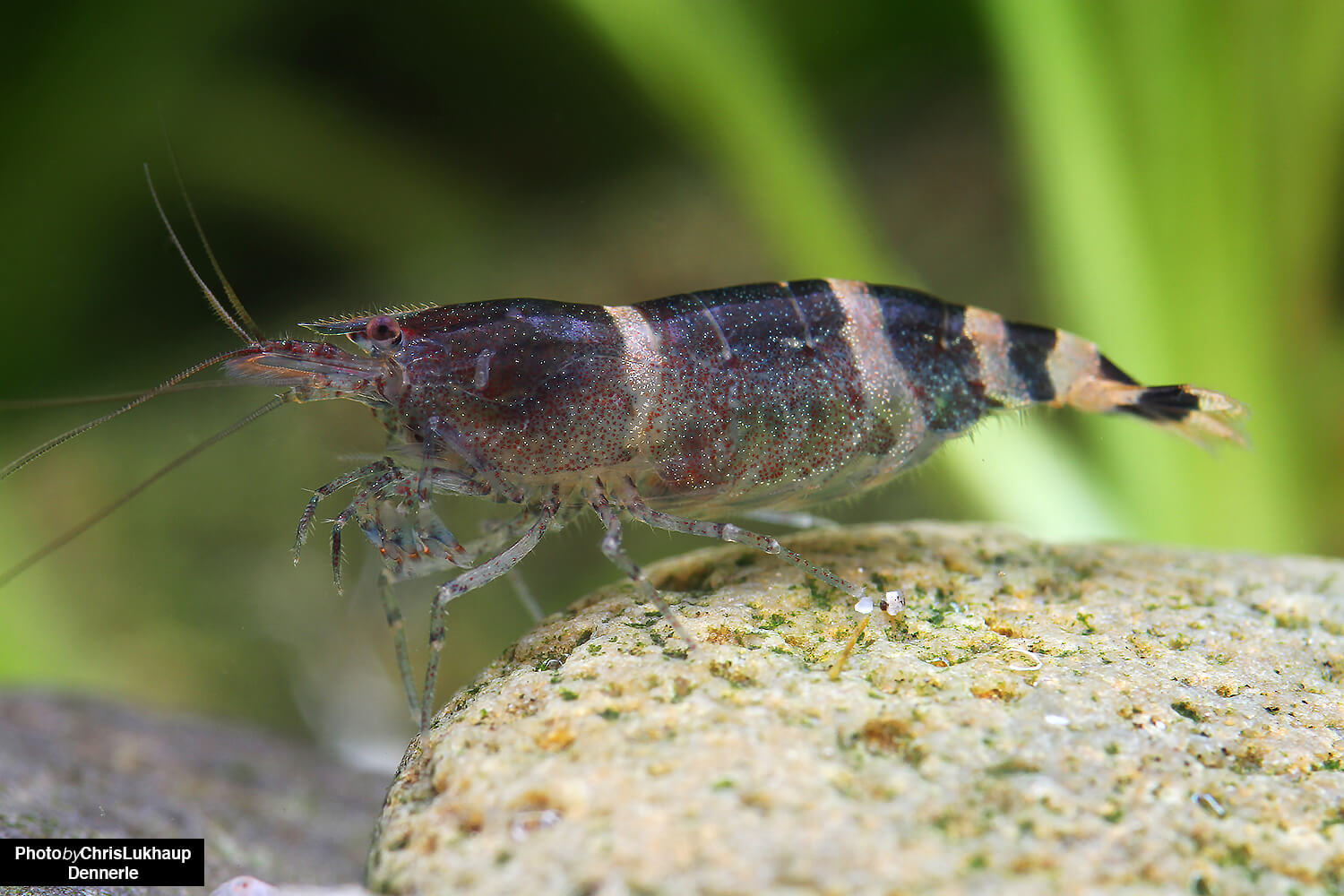
Water values
By nature the Blue Bee is a soft water shrimp. It prefers oxygen-rich, clean water with a pH of 6.5 to 7.5 and a GH of 3 to 15 °DGH, the KH may be between 0 and 8. Temperatures of 20 to 25 °C are optimal. Usually no heater is needed, in summer you should find ways to cool down the aquarium if necessary. Experience has shown that our tap water is not always suitable for keeping soft water shrimp, so in case of doubt we recommend the use of an osmosis system and treatment with Salty Shrimp GH+ or another salt-free mineral salt suitable for soft water. The humic substance additive Black Water has proven itself in the keeping of Blue Bee shrimp, because humic substances are also found in the water of the Blue Bee habitat, which have an extremely favorable effect on molting, health, colorfulness and vitality. By weekly partial water changes of 10 to 30% of the aquarium content, the germ count is kept low. The substrate can also be vacuumed from time to time - especially at the feeding area with a mulm vacuum cleaner - to eliminate any food residues that may have seeped into the substrate.
Ideal are aquariums from 20 l capacity upwards are of course no limits. Blue Bee shrimp can also be kept in smaller cubes, although we consider 10 l to be the absolute lower limit. Please always remember: the smaller such a system, the more susceptible it is to parameter fluctuations. And fluctuations are not particularly liked by the little crawlers. The filters in special shrimp aquarium sets are usually no problem even for the really very small Blue Bee juveniles. If you want to be completely safe, protect for example the Dennerle corner filter with the Baby Protect attachment.
On dark substrate the colors of the Blue Bee become very intensive and the white of the stripes literally shines. The aquarium can be planted well, even if the Blue Bee does not occur in plant-rich waters in its habitat, it does not have the slightest problem with lush green underwater landscapes! Roots and stones not only decorate the aquarium, but are also grazed with enthusiasm.
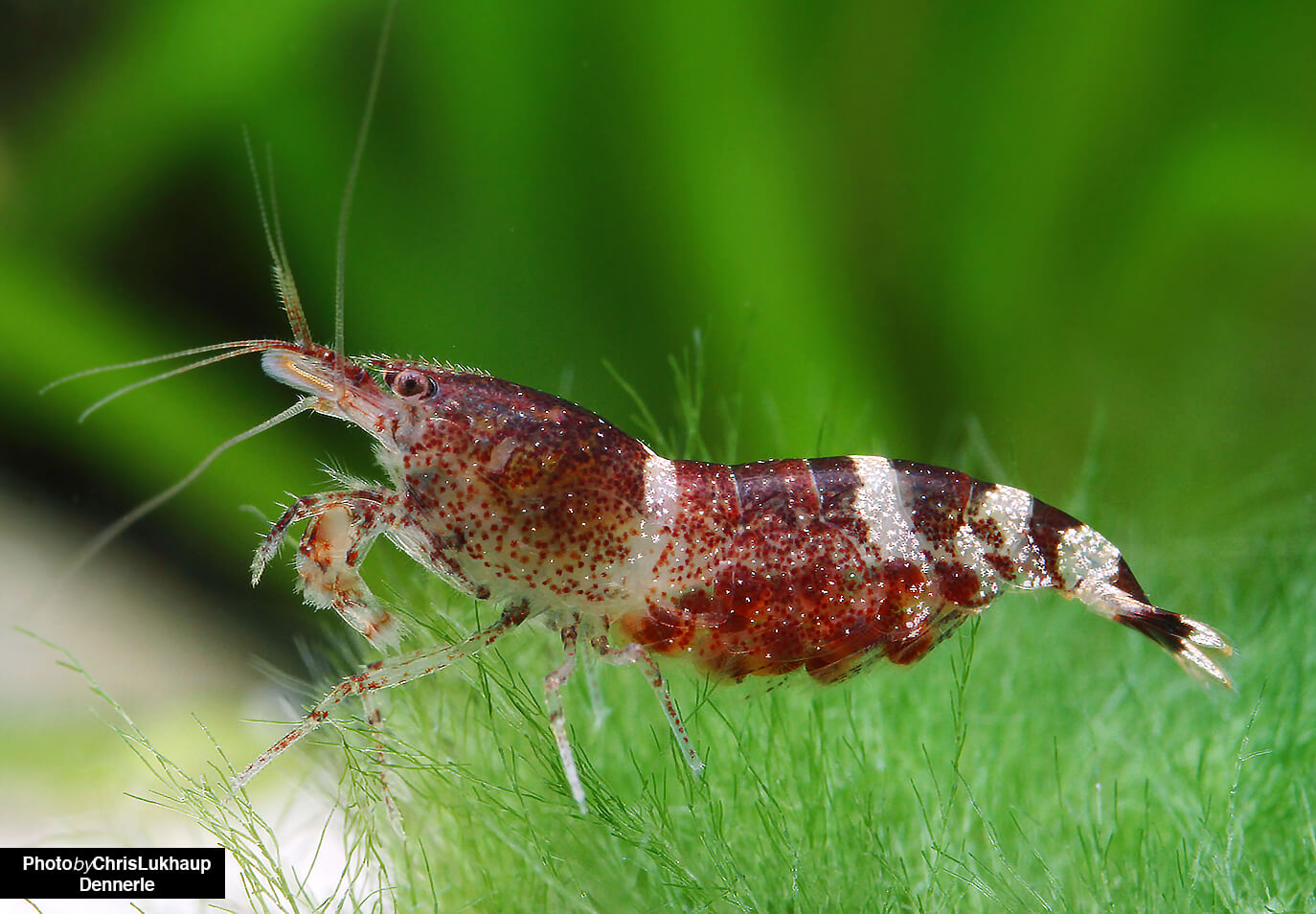
Species tank advantageous
Even dwarf fish can feast on Blue-Bee offspring, as the young are really unusually small. In the presence of potential predators such as crayfish, fish or crabs, the Blue Bee shrimp, which is not really eager to show off anyway, is no longer seen at all, because it then leaves its hiding places only rarely and mainly at night. Therefore we recommend to keep Blue Bee shrimp in a species tank. With peaceful snails, however, the pretty, color-variable animals can be very well socialized.

